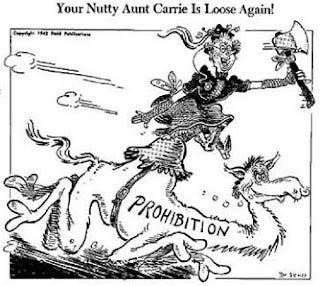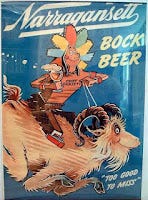When I started college in the early 1990s, drinking was part of the deal. At least that’s what movies had told me for the entire previous decade or so. The collegiate experience as summarized by a 90-minute 80s movie: You went away from home, you had a wild roommate in a very spacious dorm room, you went to wild keggers, and you met gorgeous girls there with feathered hair and garbed in one-piece leotards. According to movies, there would also be a run-in with an inept (and corrupt) dean, a zany road trip, and Rodney Dangerfield.
None of that stuff happened. What did happen was the first time I drank beer at college (the night before classes started) we got caught by the resident assistant. The event was nothing like the movies, unless the hero wrings his hands and worries how he’s going to tell his parents (Morgan Fairchild and Henry Winkler). But at least I had my first college story.
What might have alleviated my stress was the fact that many household names had been in this same trouble since American universities were log cabins and its courses were ‘Defence ‘gainst the Injuns’. Like famously stable Edgar Allan Poe, who got plunked out of the University of Virginia because of drinking. He got into West Point and then tried to get thrown out of there with the help of alcohol. Since alcohol is unmatched at helping people do stupid things, he didn’t have to wait long. He showed up drunk and naked to formation one day and he was out, the army frowning on individualism and all. Others had run-ins with booze at college. John Adams was scolded for having alcohol in his room. After founding the University of Virgina, Thomas Jefferson – still apparently hung up on this independence thing – felt that the responsibility of drinking should be left to the students. He eventually had to admit his failure in front of them and through tears. According to one student’s diary, it was common to see students so drunk that they couldn’t walk to class. It was probably best for everyone that they didn’t get there.
Still, this was in the days of old wives’ tales and medicine that took into account the weather on your birthday and the shape of your forehead. Alcohol was a daily vitamin not a toxin, and drinking wasn’t a failing but a fact of life. A shot of whiskey not only chased away diphtheria but also the demons who had brought it to your village. But in the early 20th century that gets spun that around. Temperance campaigns make it clear that drinking is very bad for your body, brain, and ability to stay out of jail. After Prohibition is passed in 1919, alcohol is not only bad for you, it’s illegal. Much of America seems to find this law to be stupid. This is evidenced by the fact that they find a hundred ways to loophole, obfuscate, and straight up break the law. All across America, bathtubs become distillation centers, basements become secret clubs, and smuggling suddenly becomes America’s number one hobby.
New England in particular dedicates itself to keeping their livers frothy and toxified. First, New England (has) had a relationship with do-it-yourself booze since the Mayflower showed up. Since then, New Englanders have been making booze from apples, pumpkins, turnips. Basically, if it grows or falls out of a tree near a house, the New Englander in that house will convert it into happy juice. So, for the US government to suddenly put a stop to that was a bunch of hooey. Like many northern Americans, New Englanders championed their proximity to Canada. After years of a mutual ‘oh, you exist?’ relationship, Canada suddenly becomes the childless third cousin who comes into money and whose echocardiogram looks like the elephant man’s forehead.
Border towns in Canada became the Tijuana of 1920s America. They experience a tourist boom not seen since British people discovered that anyplace they went wasn’t Britian. Canada becomes the destination for weekend trips and getaways for thirsty Americans. Canada also became the smuggling central as a staggering 75% of all booze smuggled into the US came across the Detroit River. Others smuggled using mountain roads and lake passes into the US. Divers in the early 2000s found huge caches of booze in Vermont’s Lake Memphremagog that had been ditched nearly ninety years before. Lighthouses were used as distribution points. Boats and fishing vessels used fake compartments to bring alcohol into New England’s harbors. New England shopkeepers used baby bottles (nipples and all) to sell covert flasks of whiskey.
So it doesn’t surprise that Dartmouth College, nestled in the mountains of New Hampshire, was and is something of an alcohol haven. It has young people and its remote location and ideals of student autonomy means the college has long been a center of student entertainment. Fraternity and sorority life is vital. The college’s (current) unofficial mascot is Keggy the Keg. And (in case you need more) it was the inspiration for Animal House. Still, the drinking has had its drawbacks. In 1920, Robert Meads shot Henry Maroney over an argument involving a bottle of whiskey. The previous year Meads had shot and killed another student over alcohol, but avoided prosecution due to the victim’s literal last-breath exoneration of the shooter. So, we might not chalk these deaths up to alcohol as much as Robert Meads being a psychopath.
Nevertheless, drinking at Dartmouth prospered under Prohibition. The president of the college was personally against drinking and into healthy living, but did not feel it his place to push that onto students. But when a group of students got caught drinking gin during Prohibition action was taken. One of these students was Theodore Geisel and he probably found the whole thing ridiculous. Geisel’s family had long been in the brewing business. It was a respectable living and a solid contribution to the utter joy of the local community. The day his father was named head brewer at the Springfield Brewery in 1919 was the same day Prohibition passed as a law. Surely, the hearts in the Geisel household that day drooped, slumped, and sagged; their moods in the dumps, all tattered, and dragged.
As a result of his gin shenanigans, Geisel was punished by Dean Craven Laycock, a man who should have read his own name aloud before passing moral judgment on those around him. Laycock insisted that young Mr. Geisel be expelled from student extracurriculars, one of which was writing and drawing cartoons for the school humor magazine The Jack O’ Lantern. Geisel, in a gesture showing just how seriously he took the crime and the punishment, searched high and low for a way to sneak through, a gap in the rules, a place to slip to; he twisted and turned and wiggled around, till a little, small, tiny loophole was found! Said loophole was employing various pseudonyms – L. Pasteur, L. Burbank, D. G. Rossetti, T. Seuss, Seuss, Dr. Theophrastus Seuss, and eventually settling on the one that would stick: Dr. Seuss.
Before Dr. Seuss tiptoed into our hearts with a hop and a pop, and green eggs and ham and a big Thneed shop, before he snuck in with Horton, and Whoville, with One Fish and Two, and taught us all lessons we already knew, he wasn’t done with his alcohol adventures. As a young illustrator in advertising, his style (that we all know and love) caught the eye of Shaefer beer, who asked him to draw an ad for their bock beer. Now a Bock’s not just some old word to forget, it’s a name for a goat, and that’s not all you’ll get! For a Bock can be strong and it’s frothy and fine, it’s a beer and a goat right at the same time!
So, Seuss drew a goat with the telltale characteristics of Whoville residents looking longingly at glasses of beer passing by. Another Whoville-like character is Chief Gassett (your bog-standard cigar store Indian) for Narragansett Beer. Chief Gassett was probably stunned to find himself riding the Shaefer goat, but once the goat explained they were going for a drink, I’m sure the chief relaxed. Seuss’s Hankey bird – drawn for a small scotch whiskey distillery – brought us even closer to the unique Seuss-style characters and even gives us some back story – and while the story’s not quite a flop, it does feel askew, like a Zibble who’s lost both his left and right shoe! A Seuss story needs sparkle, to dance on its feet, but this Seuss is limping, it’s missing the beat, clearly this story is not from his prime, because, you see, this Seuss just don’t rhyme.
Seuss was established as an illustrator when he got the opportunity to take aim at an institution which had damaged both his family and school life – Prohibition. In 1942, Prohibition flared up again, this time to limit liquor store access near army recruiting centers. (Though this is paradoxical as the army should have seen the clear link between a high blood alcohol level and signing up to go kill people.) Seuss took aim with his pencil and drew political cartoons mocking the institution that had helped create him. So, what do we drink to honor the great Dr. Seuss? Gin.
The Yink's Pink Ink Drink
Ingredients:
- 2 oz gin
- 1 oz fresh lemon juice
- 1 oz cranberry juice
- 1/2 oz simple syrup
- A splash of club soda
- Ice cubes
- Lemon twist and fresh mint for garnish
Instructions:
In the land of the Yinks, where they drink all that ink,
Comes a cocktail so tasty, it’s pinker than pink!
Grab your shaker and get ready to mix—
It’s a Yink’s Pink Ink Drink, with a few clever tricks!
Pour in your gin, two ounces should do,
It’s the start of our drink, and it’s just for you too!
Next comes the lemon, squeezed fresh with a grin,
One ounce will wake it and make it begin.
Now cranberry juice! Give an ounce, and not more,
To turn your ink pinker than ever before!
A splash of simple syrup, half an ounce, not too much,
It’ll sweeten the mix with a sugary touch.
Toss in some ice, let it swirl, let it spin,
Then shake, shook, shark, with a wild Seussy grin!
Pour it out, pour it high, into your glass it will flow,
Add a splash of club soda to give it a glow.
Garnish with mint, a twist of the lemon, and see—
Your Pink Ink Drink’s ready as fizzy as can be!
Now tip it, don’t sip it, take a drink with some spice,
And honor Ted Geisel, who made rhyming so nice!
For he found the name ‘Seuss’ when he got in a pinch,
Caught sipping on gin—by the Dean in a clinch!





Great stuff. I will make every effort to employ this newfound knowledge of Dr Seuss every chance I get.
Another wonderful story with a ton of information that I never knew. Loved all the rhyming it made me smile and grin. You are the best. Now I have to buy gin!